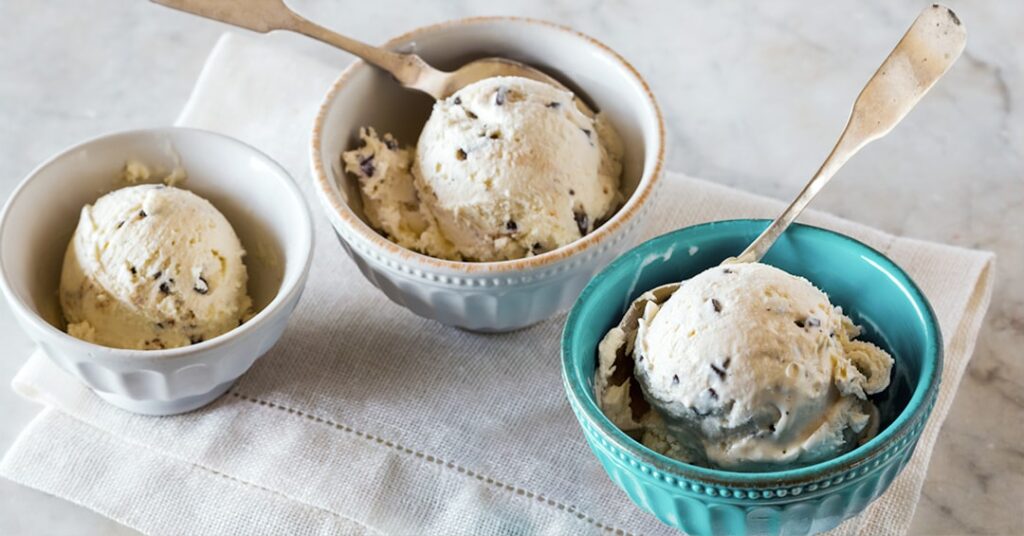There is a quiet magic in a perfect scoop of ice cream. It’s the way it yields gently to the spoon, the rich, velvety feeling on your tongue, and the satisfyingly smooth finish. This delightful experience isn’t a happy accident; it’s the result of a calm and beautiful science. At its heart, creating that creamy texture is a process of managing tiny ice crystals. Let’s walk through the simple steps and scientific principles that transform a few basic ingredients into a sublime frozen treat.
Step 1: Lay the Foundation with Fat and Sugar
Before any freezing happens, the journey to creaminess begins with the base ingredients. Think of this as preparing your canvas. The two most important players, besides milk or cream, are fat and sugar. Their roles go far beyond simple flavor.
-
The Role of Fat: The fat content, primarily from milkfat in the cream or from egg yolks, is crucial. As the ice cream freezes, these microscopic fat globules act as loving guardians. They disperse themselves throughout the mixture and physically get in the way of ice crystals, preventing them from growing large and crunchy. They coat the small crystals that do form, which contributes to the sensation of smoothness and richness in your mouth. This is why ice creams with higher fat content often feel more luxurious and less “icy.”
-
The Role of Sugar: Sugar does more than just sweeten the deal. Its primary textural job is to lower the freezing point of the water in the mixture. This is a fundamental principle of chemistry. Because the sugary water freezes at a lower temperature than plain water, a portion of the mixture remains unfrozen even at typical freezer temperatures. This small amount of liquid syrup prevents the ice cream from turning into a solid, un-scoopable block of ice, ensuring a soft, yielding texture.
Step 2: Gently Bring It All Together with Emulsifiers
If you’ve ever tried to mix oil and water, you know they naturally resist each other. An ice cream base is a similar mixture of fat and water-based ingredients. To create a stable, uniform, and creamy final product, you need an emulsifier.
An emulsifier is a special type of molecule that has a “water-loving” end and a “fat-loving” end. It acts as a peacemaker, holding hands with both the fat and water molecules to create a harmonious, stable mixture called an emulsion.
In traditional French-style ice creams, the lecithin found in egg yolks serves as a natural emulsifier. In many commercial and homemade recipes, other plant-based emulsifiers might be used. This step ensures that the fat is distributed evenly throughout the base, ready to perform its crystal-blocking duty during the freezing process.
Step 3: The Cool Transformation of Churning
This is where the true magic happens. The goal of churning is twofold: to freeze the mixture quickly and to incorporate air.
The speed of freezing is the single most important factor in determining the final texture. The objective is to create the smallest ice crystals possible.
-
Fast Freezing for Small Crystals: When the ice cream base is churned in a cold machine, the constant motion and contact with the frozen sides of the bowl cause ice crystals to form rapidly. Quick freezing doesn’t give them time to grow large and jagged. Slower freezing, in contrast, allows water molecules to migrate and join existing crystals, resulting in a gritty, icy texture.
-
Incorporating Air (Overrun): As the dasher or paddle churns the base, it also whips air into the mixture. This process, known in the industry as “overrun,” is what makes ice cream light and scoopable rather than dense and heavy. The amount of air incorporated can vary greatly, from the low overrun of dense gelato to the high overrun of lighter, fluffier commercial ice creams. These tiny air bubbles also contribute to the perception of smoothness.
Step 4: A Patient Rest to Harden and Mature
Once the ice cream comes out of the churner, it has the consistency of soft serve. While delicious, it hasn’t reached its final, stable state. The final step is to let it “harden” or “ripen” in a very cold freezer for several hours.
During this resting period, more of the water freezes, firming up the ice cream’s structure. This stabilizes the network of small ice crystals, air pockets, and unfrozen syrup that you so carefully created. It’s a quiet, final step that ensures the texture will hold, giving you that perfect, satisfying scoop when you’re ready to enjoy it.
Ultimately, the cool science of a scoop is a gentle dance between ingredients and temperature. By understanding how to control fat, sugar, air, and the size of ice crystals, we can appreciate the calm, deliberate process that leads to one of life’s simplest and most profound pleasures.
Photo by American Heritage Chocolate on Unsplash

